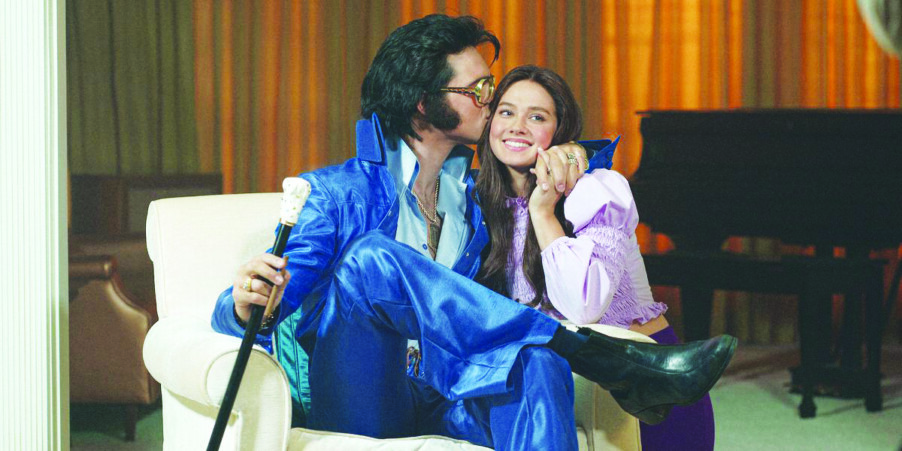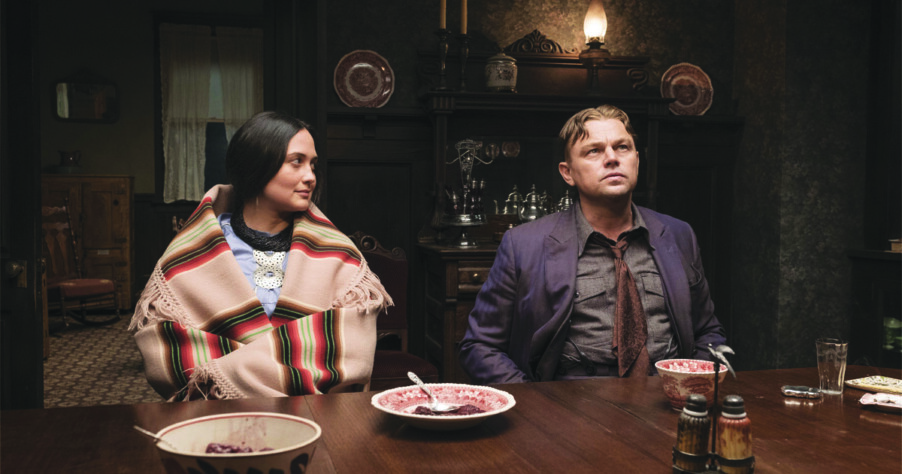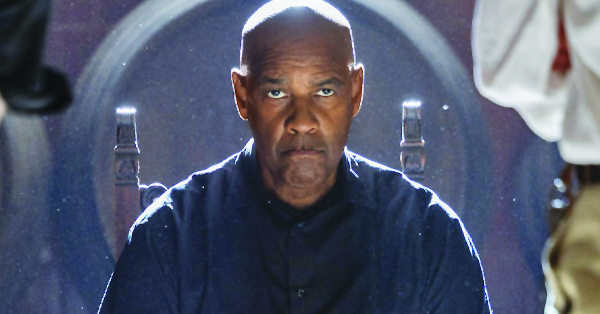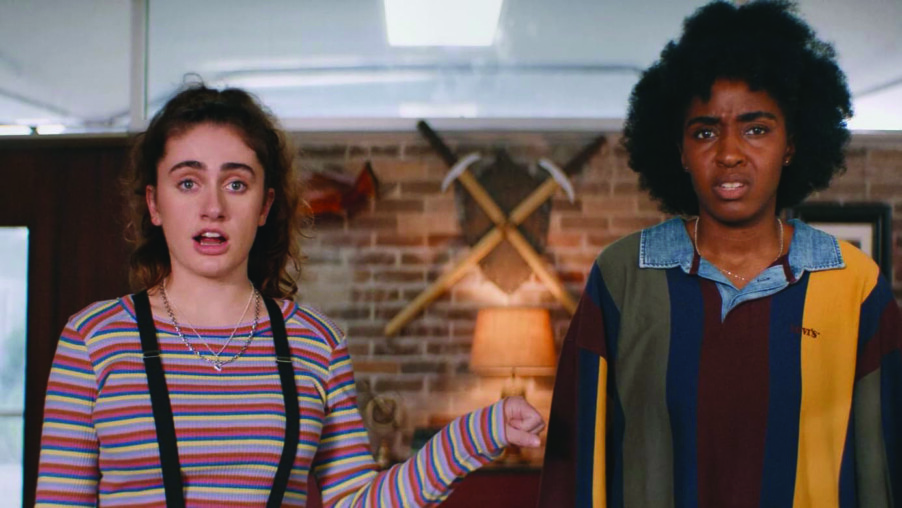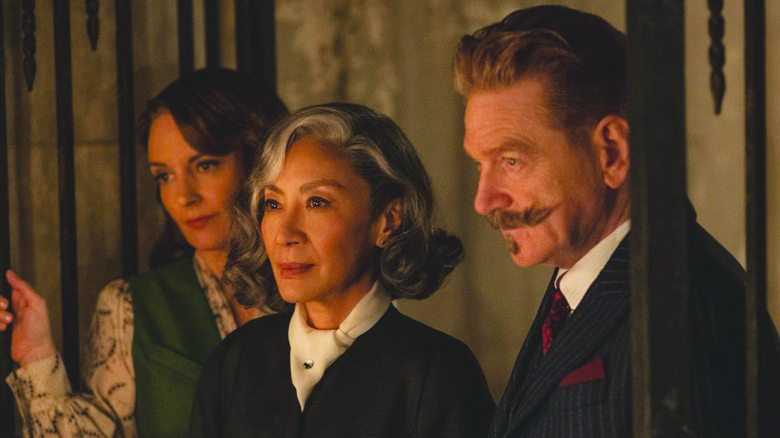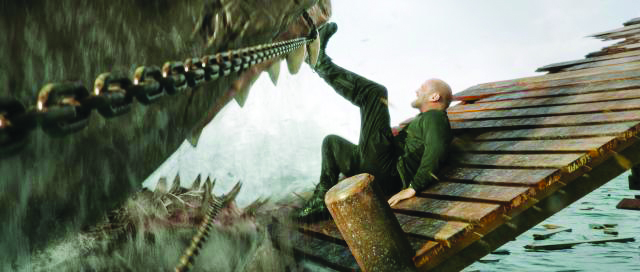Give yourself some scares with these new movies
By Amy Diaz
adiaz@hippopress.com
Here are a few new spooky films for your Halloween season movie night viewing pleasure/terror.
The latest in the Conjuring cinematic universe and a sequel to 2018’s The Nun, The Nun II (R) has Taissa Farmiga returning as Sister Irene in 1956 Europe. Sister Irene works at a convent where apparently no one knows she was the lady who fought the nun-garbed demon Valak. She is friends with nun-in-training Debra (Storm Reid), an American whose father sent her to the convent because it’s better than 1950s Mississippi.
Meanwhile, Maurice (Jonas Bloquet), a guy the movie reminds us was in the first Nun, is working at a French boarding school. He has a sweet flirtation with teacher Kate (Anna Popplewell, Susan Pevensie all grown up), and is kind to her shy daughter, Sophie (Katelyn Rose Downey). Oh, and also he’s possessed and has been dragging the demon Valak through Europe like a rat infecting the continent with the plague. As he’s moved west, religious people have met supernaturally bad ends. After a priest bursts into flames in France, Sister Irene is asked by the Vatican to go investigate. Sister Debra tags along and they make an excellent paranormal investigative team. More Sisters Irene and Debra, please, Conjuring universe!
Valak, like many a Conjuring universe baddie, is often a “messing with you” presence; the first half of this movie is a fair amount of unnatural creaks in the shadows and jump scares that come from a sudden, brief appearance of the Nun. But the movie picks up steam and is compelling enough thanks to some fun Catholic saint lore and Farmiga’s performance. These movies have something that while not a ha-ha sense of humor is also not not a sense of humor. There’s a humanity to the stories and to Farmiga’s characters. Still in theaters, the movie is also available for rent or purchase. B-
The Blackening (R) hit theaters in June but is on VOD and also streaming via Starz. It riffs on horror movie tropes (a cabin in the woods, sketchy-seeming locals) and considers what it means to be Black (in America and in horror movies). A group of friends from college, with their various histories and romantic connections, heads to a house in the woods to spend Juneteenth weekend together. But when Lisa (Antoinette Robertson), Allison (Grace Byers), Dewayne (Dewayne Perkins), King (Melvin Gregg), Nnamdi (Sinqua Walls), Shanika (X Mayo) and Clifton (Jermaine Fowler) get to the house, they can’t find their buddies Morgan (Yvonne Orji) and Shawn (Jay Pharoah) anywhere.
They do find a creepy game room and an even creepier racist board game called The Blackening, which they are invited/forced to play by a masked killer.
This is a very solid ensemble and the movie gives dimensions to the relationships between the members of the friend group. While perhaps not a true horror aficionado’s brand of scary — there are more laughs than scares — it’s a mix of comedy and horror that I appreciate. B+
Similarly, Totally Killer (R), streaming now on Amazon Prime Video, plays with 1980s slasher- and teen-movie tropes. Teen Jamie’s (Kiernan Shipka) mom, Pam (Julie Bowen), is murdered on Halloween in 2023, possibly by the never-caught “Sweet Sixteen Killer” who murdered three of her high school friends in the days leading up to Halloween 1987. Devastated and afraid of the Sweet Sixteen Killer herself, Jamie ends up in a time machine built by her friend Amelia (Kelcey Mawema). She goes back to 1987 just before the killings and meets teen Pam (Olivia Holt) and her friends, who call themselves the Mollies because of their intense Molly Ringwald fandom and who are, in the specific style of late 1980s teen girls in movies, horrible. Jamie is sort of appalled that her mother is such a Heather, but she needs to stop the killer. And she needs to fix the time machine, busted during its travels, so she won’t get stuck in John Hughes hell. She turns to teen Lauren (Troy Leigh-Anne Johnson), Amelia’s mom, who was the first to work on the time machine plans and is surprisingly chill about someone from the future showing up needing help.
This movie is very fun, with a nice balance between time travel foolishness, Gen X versus Gen Z teens and the slashing, which is very much of the large-knife-and-red-corn-syrup-everywhere school of horror. Shipka makes a solid main character who can pull off both the “the ’80s were weird, man” and the killer-fighting moments — sporting a very fun Can’t Buy Me Love-ish white cropped fringe jacket. B
Hulu’s Slotherhouse (PG-13) also has way more laughs than scares — starting with its killer, which cracked me up every time it was on screen. Sorority girl Emily (Lisa Ambalavanar) is eager to unseat Brianna (Sydney Craven) as sorority president and so, to pump up her social media likes, she “adopts” a sloth, whom she names Alpha. Alpha is a little shy of standard teddy bear size and has a real “janky sloth puppet stretched over Teddy Ruxpin frame” look. Alpha is awesome and really sets the tone for this movie, which I would describe as, like, Cocaine Bear but dumber.
While Emily basks in her newfound fame and gains supporters, nobody seems to notice that sorority girls are going missing. Also, nobody seems to realize that Alpha can scroll Instagram or drive a car.
The humans play it mostly straight, largely obsessed with the sorority drama, with the increasingly psychotic Alpha really hamming it up while plotting revenge on the humans who she blames for removing her from her beloved Panamanian jungle. The methods of Alpha’s murders are increasingly hilarious, as very game actors have to be terrified by and wrestle with this discount-bin midway-prize of a creature. As the movie throws off all cares in the final third, Alpha grows bolder, taking a selfie with one victim and doing a little “come at me, bro” dance with another. It’s glorious. I don’t know, A+? OK, OK, B.
Pet Sematary: Bloodlines (R) This Paramount+ movie, billed as a prequel, required me to do some early-in-the-film Googling to figure out what I was supposed to know and who I was supposed to remember. College-age-ish Judd Crandall (Jackson White) and girlfriend Norma (Natalie Alyn Lind) are the familiar names, along with recently home from the Vietnam War Timmy Baterman (Jack Mulhern) (it’s 1969). Judd and Norma are getting the heck out of Ludlow, Maine, when we meet them — except of course, they don’t. A crow, the evilest of birds, hits their car windshield and when they get out to investigate they see a sketchy dog in the road. Hey, that’s Timmy’s dog, let’s walk him back to Timmy’s house, says Judd, a dummy. The world’s most “at best, I have rabies” dog eventually bites Norma so badly that she needs to go to a hospital; Timmy, who also seems like a dog with rabies, doesn’t show much sympathy. Because, of course, it wasn’t an alive Timmy but Timmy’s deceased body that came home from the war, and Timmy’s dad, Bill (David Duchovny), buried him in the cursed land behind the Pet Sematary for the purposes of resurrecting him. The movie can’t seem to decide whether the cursed land resurrection thing is something everybody knows about or a big secret — it seems to be both?
Other questions: Why hire Pam Grier to play one of those in-the-know townsfolk, Pam flippin’ Grier who is awesome professionally, and then barely use her? Why construct a whole 1600s-set flashback that doesn’t really offer new information? Bloodlines threw a lot of elements in the mix but didn’t seem to have a clear idea what it wanted to do with them other than get to an end point that could plausibly hook in to the original story. This is a movie that needs to simplify and add context — look in the mirror and take a few things off, to borrow from Coco Chanel, but then put different things on. Be a whole different movie, I guess, is what I’m saying. For the King completists, people do say “sometimes dead is better” a few times, so I guess you’ve got that. D+
A more successful riff on Stephen King is The Boogeyman (PG-13), which hit theaters in June and is now available for rent or purchase and is streaming on Hulu. Based on a King short story, the movie gives us traumatized family psychologist dad Will Harper (Chris Messina), teen Sadie (Sophie Thatcher) and younger kid Sawyer (Vivien Lyra Blair). The family is just barely getting back to normal life, with Sadie and Sawyer returning to school for the first time after the sudden death of their mom. After a crummy first few minutes at school, Sadie returns home to change just as Will has started taking to Lester Billings (David Dastmalchian), a drop-in patient whose desperation convinces Will to talk to him — until Lester starts talking about his three children whom he definitely didn’t murder. Will goes to call the police and Lester (possibly accompanied by Something) wanders around the house, eventually winding up in a closet where Sadie finds him, having hung himself. Or Something.
Sadie brushes aside the possibility of “or something” until Sawyer, already scared of the dark to such a degree that she cuddles with a lightball and sleeps in a bed surrounded by even more lights, starts to see a Something herself. Eventually Sadie tries to investigate the Something and what exactly happened to Lester’s family.
This movie does a good job of giving you the vibe of two familiar fears: the kid fear of a monster lurking in the dark and the parent fear that they won’t realize their kid is in danger until it’s too late. Even though this Boogeyman likes to “play with its food,” as a character played by Marin Ireland explains, all the creaking boards and flickering lights actually do a better job at putting you in a scary mindset than they often do in these movies. B
Grief also permeates Talk to Me, released in theaters this summer and available for purchase or rent on VOD. Mia (Sophie Wilde) is still deeply traumatized after the death of her mother two years earlier from a drug overdose — was it intentional, accidental or something else? This uncertainty eats at Mia and, combined with her sadness, keeps up a barrier between Mia and her father, Max (Marcus Johnson). She turns to her friend Jade (Alexandra Jensen) and Jade’s family — younger brother Riley (Joe Bird) and mom Sue (Miranda Otto). But there is friction in her relationship with Jade, who is dating Daniel (Otis Dhanji), a boy Mia once liked.
Mia drags Jade and Daniel to a party like one she’s seen on social media, where participants hold a plaster-looking hand and say “talk to me,” apparently summoning a person who has died. “I let you in” allows that dead person to enter, for 90 seconds, the living. The experience, as Mia and others portray, is a rush that all these teens record on their phones to post — and really is this movie just a horror movie for parents about the dumb things kids will do for social media clout? Mia becomes obsessed with the feeling and, when one kid appears to have reached her mother, desperate to increase her interaction with the other side. Naturally, things go wrong when Riley, despite being too young as almost everyone agrees, is allowed to hold the hand and the thing that he lets in doesn’t seem to leave.
This is the kind of horror movie where if you removed the supernatural element it would still basically work as a character study of a person sinking into their pain and making all the wrong decisions. Ultimately Talk to Me felt more sad than scary to me, but it does a good job creating the unease of not knowing whether a ghost or the person’s own mind is driving the horror. B-
In Hulu’s No One Will Save You (R) main character Brynn (Kaitlyn Dever) has also lost her mother and now lives alone in her hometown, where she gets dirty looks from passers-by and is spit on by the wife of the chief of police. She spends her time making a scale model of a more idyllic town and teaching herself the fox trot, never saying a word to anyone. Actually, one of the gimmicks of this movie is that, with one exception, no words are spoken at all.
One night Brynn wakes up to sounds of someone in her house. But then she hears the visitor “talk” and realizes that whatever is downstairs, it’s not human. She tangles with it and gets a look at what appears to be an alien. The next morning, terrified, she tries to get into town, where she sees signs of destruction similar to what happened at her house. She also sees some humans with pulsating things in their necks and suddenly making very alien-like sounds. As night falls, even stranger-looking aliens appear.
This hour-and-a-half movie really hangs on how captivating Dever can be running and fighting and hiding and trying not to scream — and she is! Dever, so good in comedies like Booksmart and Rosaline, is just as compelling in this role. No One Will Save You has that “playing with an idea” feel of a Twilight Zone episode. There is a nice bit of psychological horror blended with the sci-fi thrills. B
The Mill is listed as “science fiction” and “thriller” but its tale of corporate worker Joe (Lil Rel Howery) strikes me as a very particular kind of modern horror. Mallard, a sort of Amazon/Apple everything company, is represented by a pleasant Siri-ish voice that tells Joe he’s being tasked with learning how to reach his goals and live up to his potential. What that actually means is that, after woozily waking up in a dirt cell with a push-operated grist mill in the center of it, Joe has to push the stone mill in 50 rotations each day to meet a quota. If he doesn’t meet his quota, if he has the fewest rotations of all the other unseen (but heard in their screams) workers or if he refuses to make any rotations, he will be terminated. Joe’s not sure what “termination” means but he can infer from the bloodcurdling screams of others picked for termination that it is not good.
The pushing of the mill is pointless busywork and the whole operation is run with corporate efficiency that only cares about “productivity” (regardless of whether the work produces anything) and doesn’t care if people have spouses or children, like Joe’s expectant wife Kate (Karen Obilom), whom he is desperate to get back to or at least to prevent from being “onboarded” as a “coworker.”
The Mill is compelling, at times darkly funny (Joe is at one point given a pen with his name on it as a token of appreciation) and genuinely scary in the sense that situations with no one to appeal to can feel scary. Howrey is able to give Joe depth and fill in a personality beyond just a man being tortured by his employer. B
Featured photo: Slotherhouse

